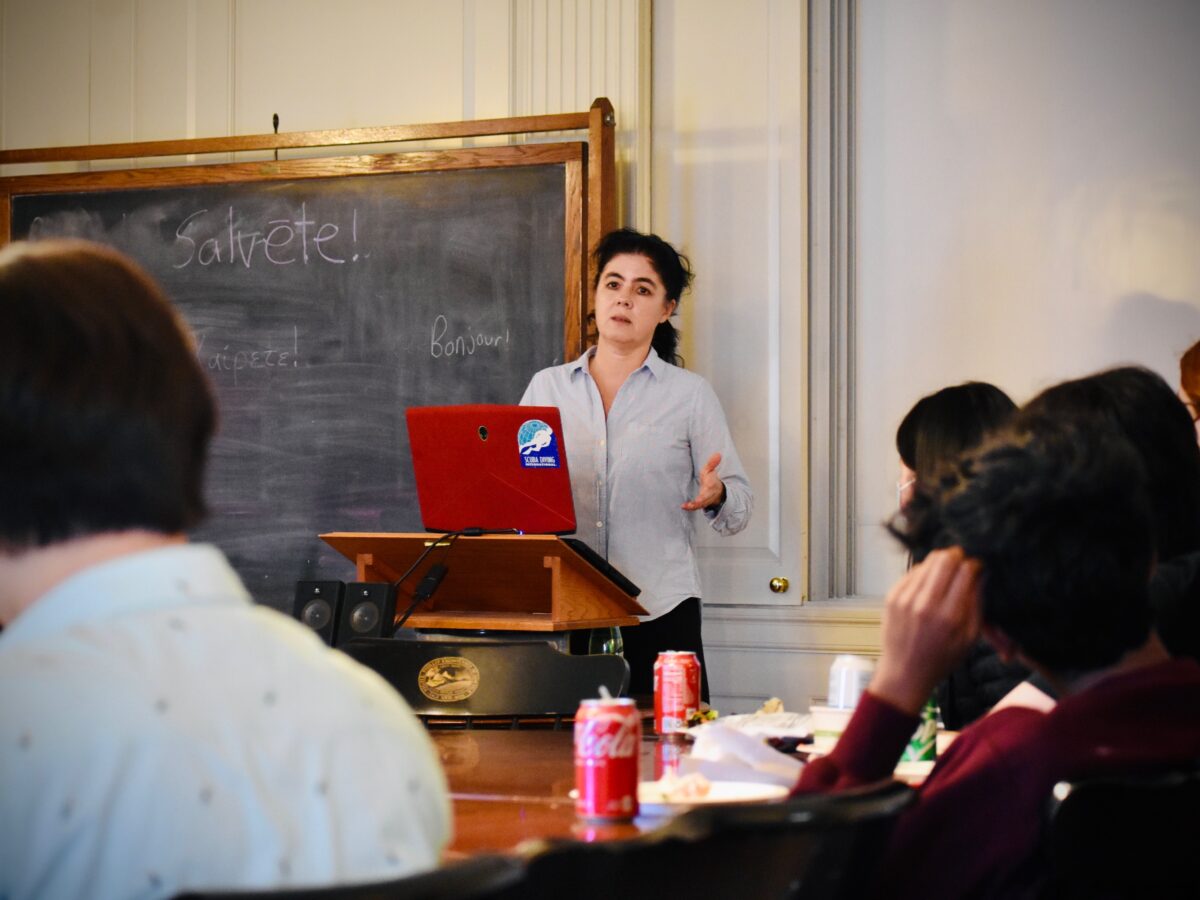“I often get the question: ‘What’s the most amazing thing you’ve ever discovered?’” Buxton said. “It’s a very difficult question to answer because the things I’m most excited about are the things I haven’t found yet.”
Her talk mixed images of different expeditions with practical tips for how to locate potential field sites. The patterns of where ships tend to wreck, she explained, hasn’t shifted much over the centuries: They’re often found near transportation hubs, as well as islands. “Ships love crashing into islands and shores,” Buxton pointed out. “So, a place like Croatia, which has 1,300 islands, is a really good place to look for ancient shipwrecks.”
In terms of research, Buxton said the true “eureka” moments come in the library, while searching through ancient documents and maps of all different forms. “I like to do most of the research, most of the searching, before I ever go out into the field,” she stressed.
Though big expeditions cost between $50,000 to $100,000 per day, Buxton said it’s possible to fund several weeks of fieldwork for that amount in total. “Find projects, do independent studies, apply for every small grant that you can get,” Buxton advised the students. “You want a track record of taking money, spending it, accounting for it, reporting for it, so when the time comes for you to ask for the big bucks, you’ve got that track record.”
Learning a skill — such as diving, fixing ship engines, 3-D digital photo modeling or using oceanographic tools like sonar — might be the best way to pursue a career hunting down shipwrecks, Buxton added. “You find a way to start doing what you want to do, and eventually people will get to know you as somebody who they want to have on a project,” she said. “It’s really the best advice I can give, even now — volunteer, volunteer and volunteer. One day you might even get paid for what you do.”
